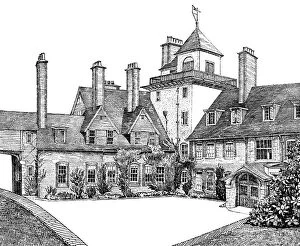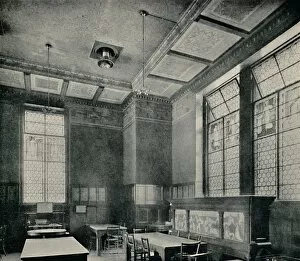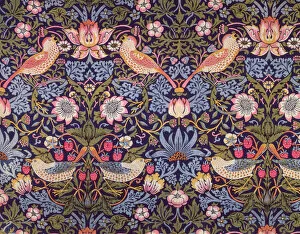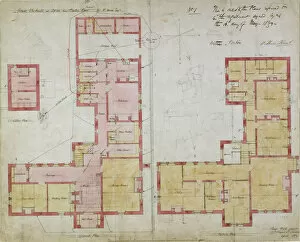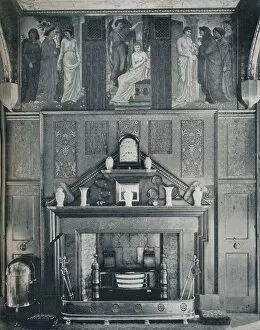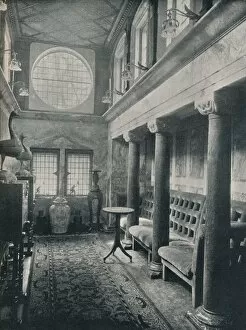Philip Webb Collection
Philip Webb was a renowned British architect and designer, known for his contributions to the Arts and Crafts movement
For sale as Licensed Images
Choose your image, Select your licence and Download the media
Philip Webb was a renowned British architect and designer, known for his contributions to the Arts and Crafts movement. Born in 1831, he left an indelible mark on the architectural landscape of Britain. One of his notable works is The Court Yard at Standen, East Grinstead. Completed in 1900, this stunning structure showcases Webb's mastery of design and attention to detail. With its intricate stonework and elegant proportions, it stands as a testament to his architectural genius. Webb's talent extended beyond architecture; he also had a flair for interior design. The Green Dining-room at South Kensington Museum is a prime example of this. Created around 1870 by an unknown artist under Webb's guidance, it exudes sophistication with its rich colors and ornate furnishings. In addition to his architectural prowess, Philip Webb was also skilled in watercolor painting. His work "Philip Webb" from 1873 showcases his ability to capture beauty on paper using delicate brushstrokes and vibrant hues. Collaborating with William Morris, another prominent figure in the Arts and Crafts movement, Webb designed The Strawberry Thief textile. This iconic piece features Morris' signature nature-inspired motifs combined with Webb's meticulous attention to detail. Webb's artistic talents were not limited to architecture or textiles; he also dabbled in stained glass window design. His cartoon for a Stained Glass Window of Eve from 1862 displays his skillful use of black chalk along with pen and brush techniques that bring life to this biblical scene. Amongst his many achievements is the Red House in Bexleyheath, London - one of the first Arts and Crafts architecture. Designed by Philip Webb himself in 1859, it revolutionized domestic architecture with its open plan layout and integration into natural surroundings. The Cupid and Psyche Frieze at No. I Palace Green exemplifies how Philip Webb seamlessly blended artistry with functionality.

